Everything new in Contensis 17.1
Today’s audiences expect more than one-size-fits-all content. Whether they’re students choosing a course, residents looking for local services, or customers researching the right product or service, people want information that feels relevant to them in the moment. Meeting those expectations has become essential for building trust, improving engagement, and delivering real value.
That’s why Contensis 17.1 puts personalisation front and centre – in a privacy-first way. It doesn’t rely on third-party cookies or intrusive tracking. Instead, visitor data is stored in local storage on the front end, leading to higher consent rates and more visitors seeing relevant experiences.
Alongside personalisation, this release introduces a powerful set of features that help you personalise content, create richer page layouts, and better manage your content model. Together, these updates give editors and developers the flexibility to deliver richer experiences while keeping control of how content is structured and maintained.
Let’s take a look at what’s new.
Personalisation: Deliver content that adapts to your audience
Personalisation in Contensis enables you to show the right content to the right people at the right time – based on who they are, where they’re browsing from, and how they’ve previously interacted with your site.
And crucially, it’s privacy-first. Audience and signal data is stored in a visitor’s local storage and used directly on the front end. Nothing is sent back to Contensis by default. That means you can deliver targeted experiences without the complexity of third-party cookies or invasive tracking – ideal for any organisation that needs to stay compliant with data privacy regulations.
Whether you’re a university presenting region-specific course info, a council surfacing local services, or a membership organisation tailoring offers by tier, personalisation helps you create more relevant, engaging experiences.
Audiences: Group visitors by traits and behaviour
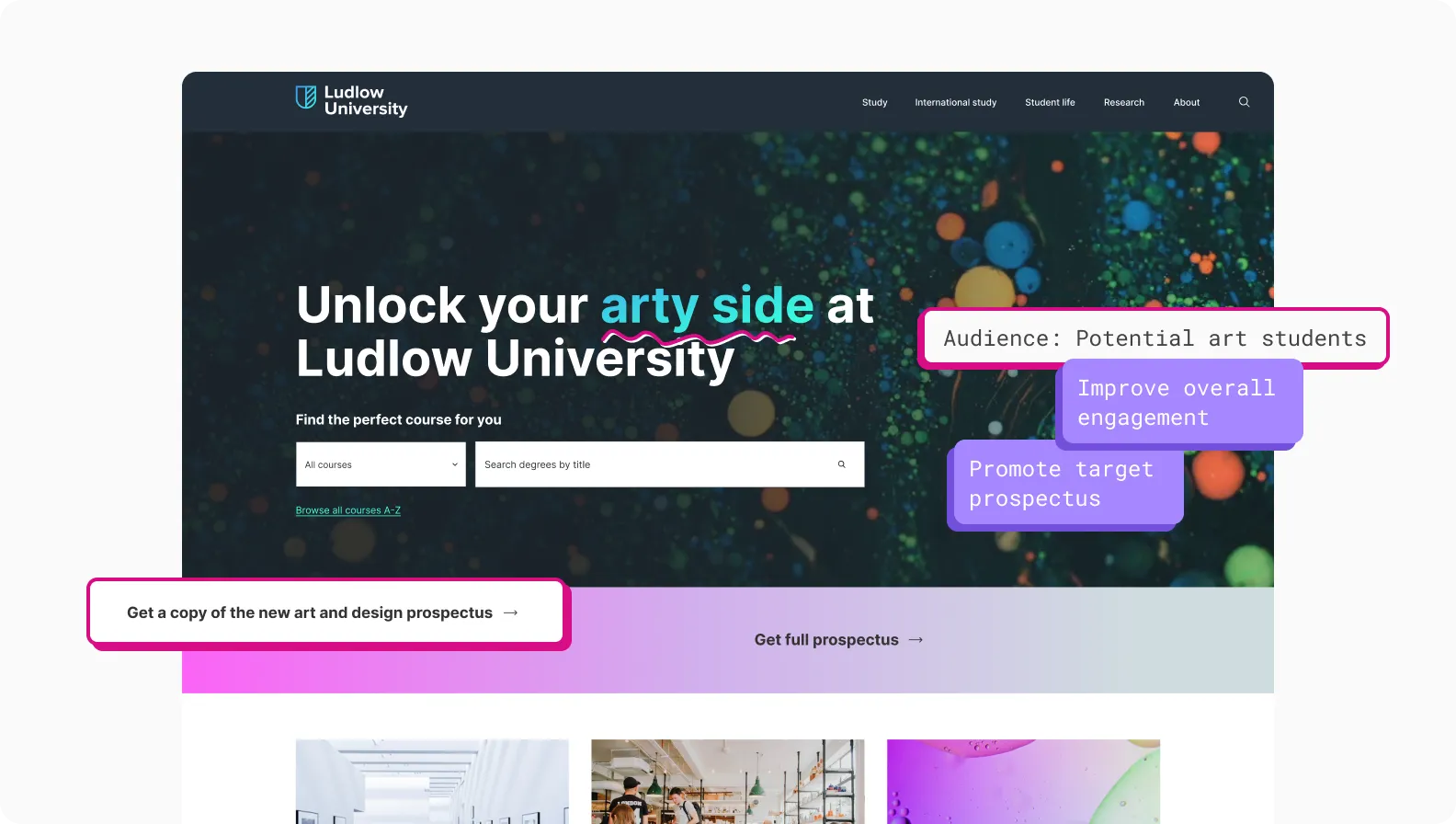
Audiences let you segment users into meaningful groups – such as first-time visitors, alumni, or mobile users in a specific region. These groups can be built from visitor signals or other audiences, giving you flexibility and control.
For example, you might target:
- Prospective students from outside the UK
- Alumni visiting a donation campaign
- Residents browsing recycling pages on mobile
Signals: Define the rules behind each audience
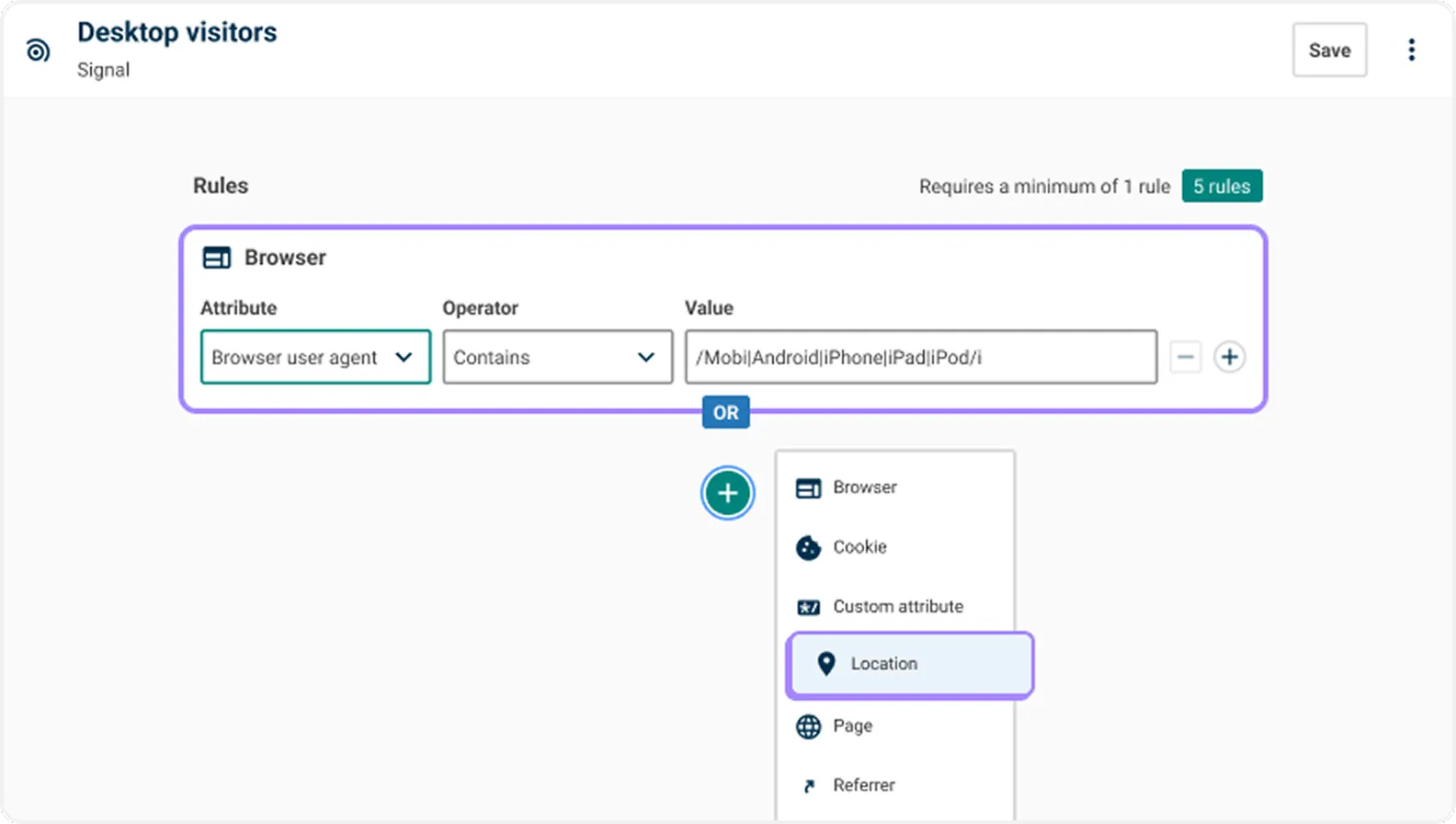
Signals define how visitors are grouped. Each one contains rules and conditions – like location, referrer, or page visits – that determine who qualifies for a specific audience.
You might create a signal that matches:
- Visitors in the UK viewing the /courses section
- Returning users on mobile devices
- Referrals from a specific campaign site
This gives you the building blocks for personalisation logic that’s precise and adaptable.
Custom attributes: Personalise with your own data
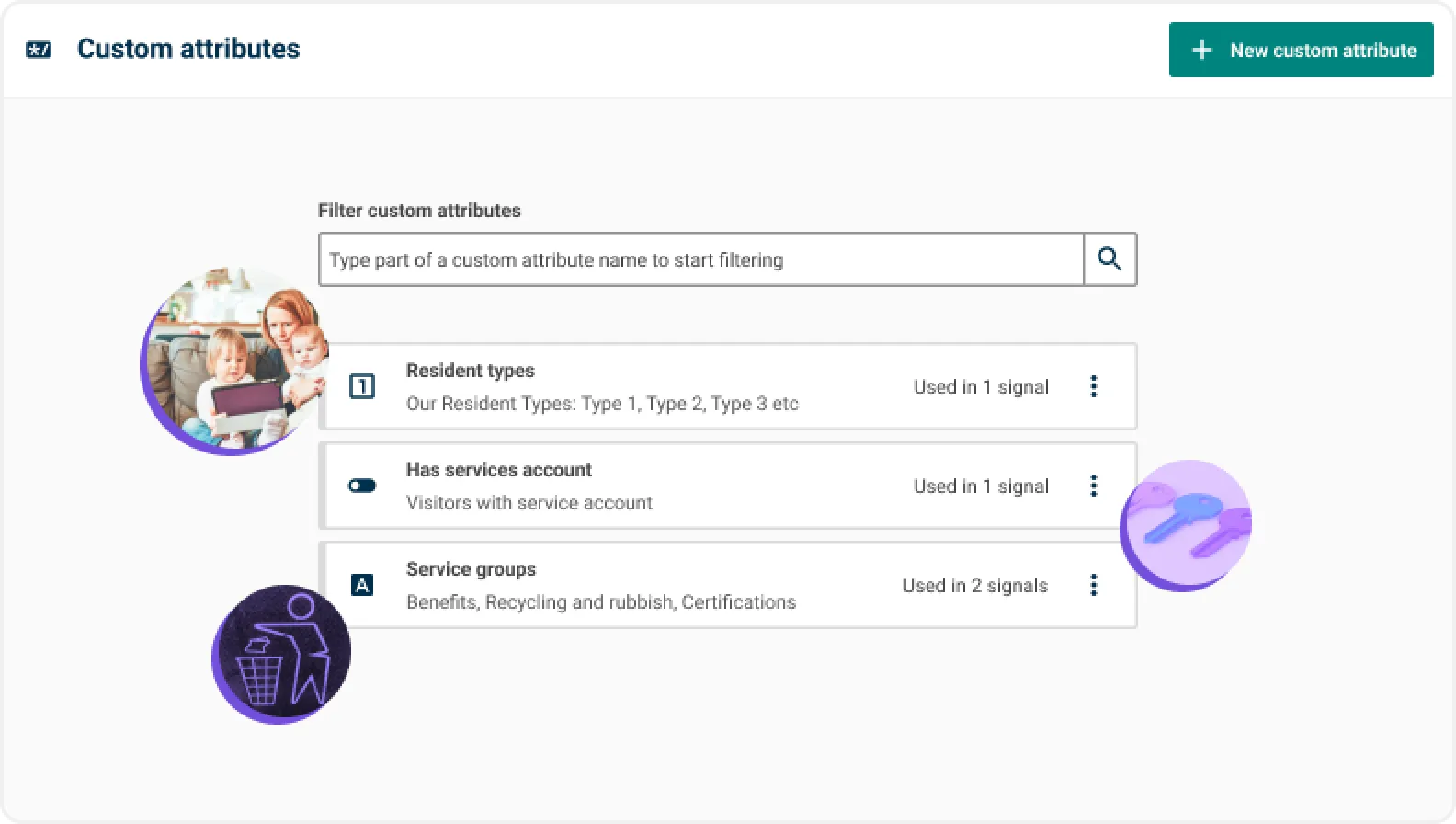
Go beyond the defaults with custom attributes. These let you define your own signals – like membership level, applicant status, or service group – based on the data you care about most.
For example:
- Local government: Resident type, service group
- Higher education: Course interest, application stage, alumni type
These attributes can be reused across signals and audiences, making your personalisation setup easier to manage and more consistent.
Manifest deployment: Control when personalisation goes live
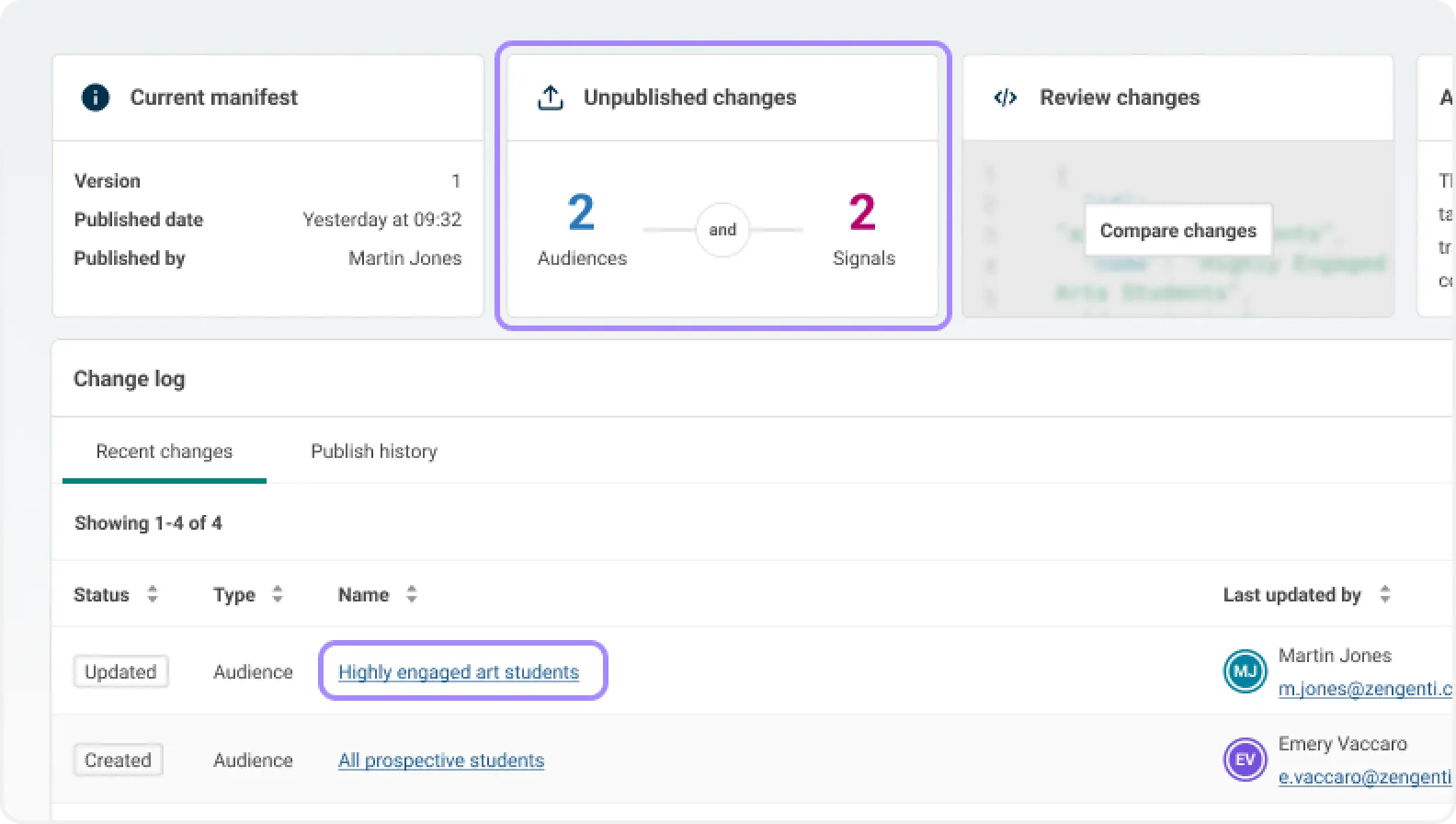
The Manifest is the source of truth for your personalisation setup. It captures your audiences, signals, and custom attributes in a version-controlled structure and lets you decide when changes go live.
On the Manifest screen, you can:
- View a detailed changelog
- Compare working vs published versions
- Publish updates on demand
This gives teams the confidence to experiment, review logic, and launch changes when they’re ready.
Preview personalised experiences
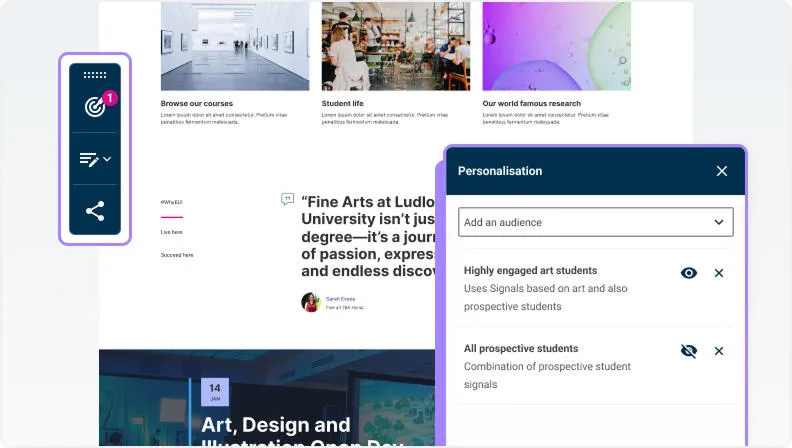
The new personalisation toolbar lets you preview how content appears for different audiences – right inside the editing interface. Whether you’re testing variants or verifying rules, you can be sure your audience will see exactly what you intend, before hitting publish.
Audience picker in entries and components
With the new audience picker field, you can assign content to specific audiences directly within entries and components. It’s an intuitive way for editors to deliver targeted content – no developer input required.
Canvas: Build smarter layouts with reusable blocks
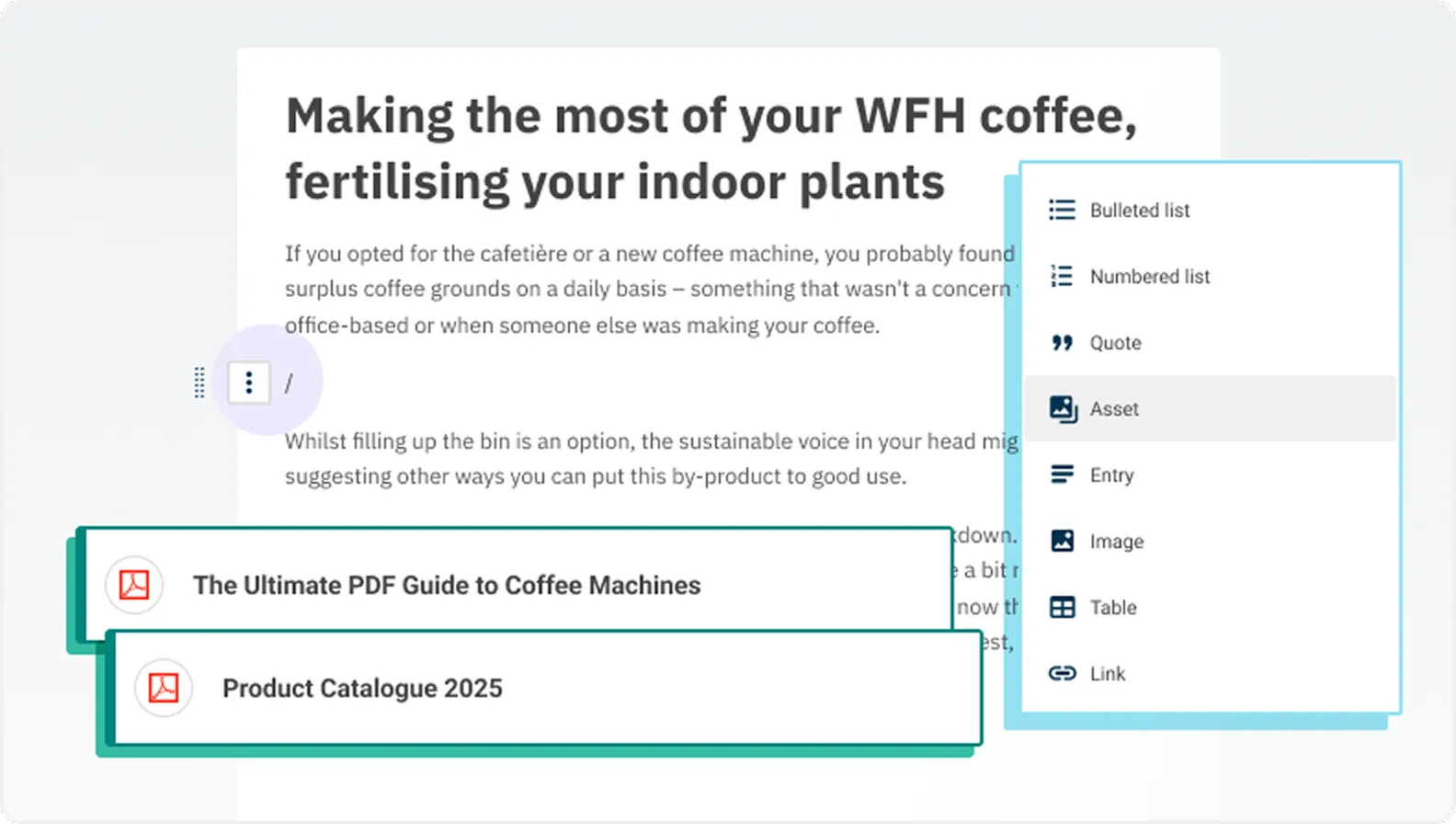
Canvas now supports entries and assets as standalone blocks, giving editors more freedom to compose pages from structured content and media – without compromising consistency or performance.
Add entries as dynamic blocks
Drop reusable content – like testimonials, bios, or event cards – into your layout using the /entry command. Each block stays up to date with the original entry and can be easily edited or swapped out. Great for keeping content current across multiple pages without duplication.
Add assets as inline blocks
You can now embed documents, audio files, and other media directly into your Canvas layouts using the /asset command. Perfect for linking to product manuals, downloadable guides, or media kits. When the asset is updated, so is the block – automatically.
Content modelling: Understand changes and stay in control
This release also includes new tools to help you manage your content model more effectively – whether you’re tracking recent changes or reviewing version history.
See who changed what – and when
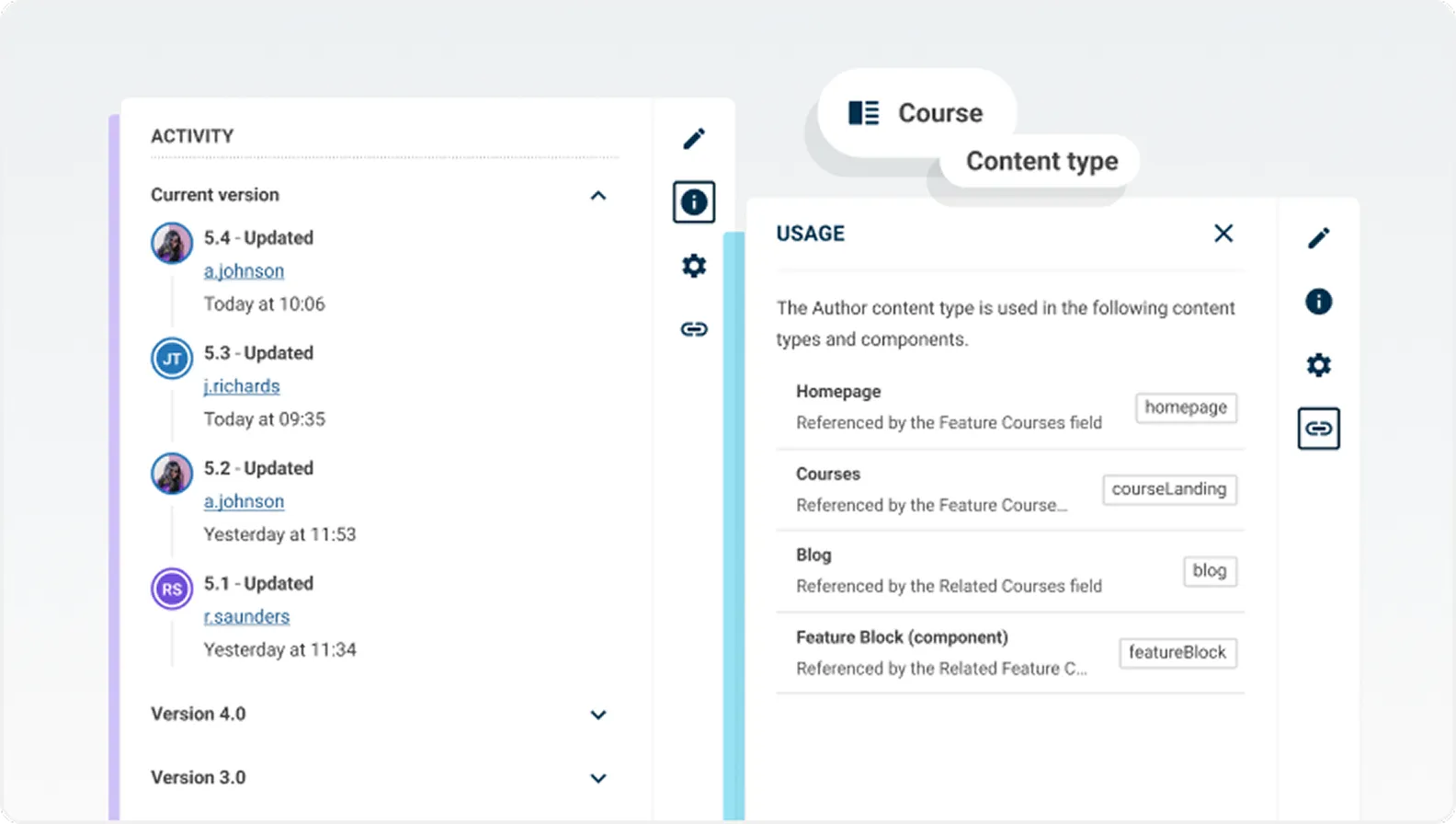
The new activity stream in the content type and component builder shows a clear record of updates. You can see what changed, who made it, and when – grouped by version for easy auditing and collaboration.
Compare versions with a JSON diff view
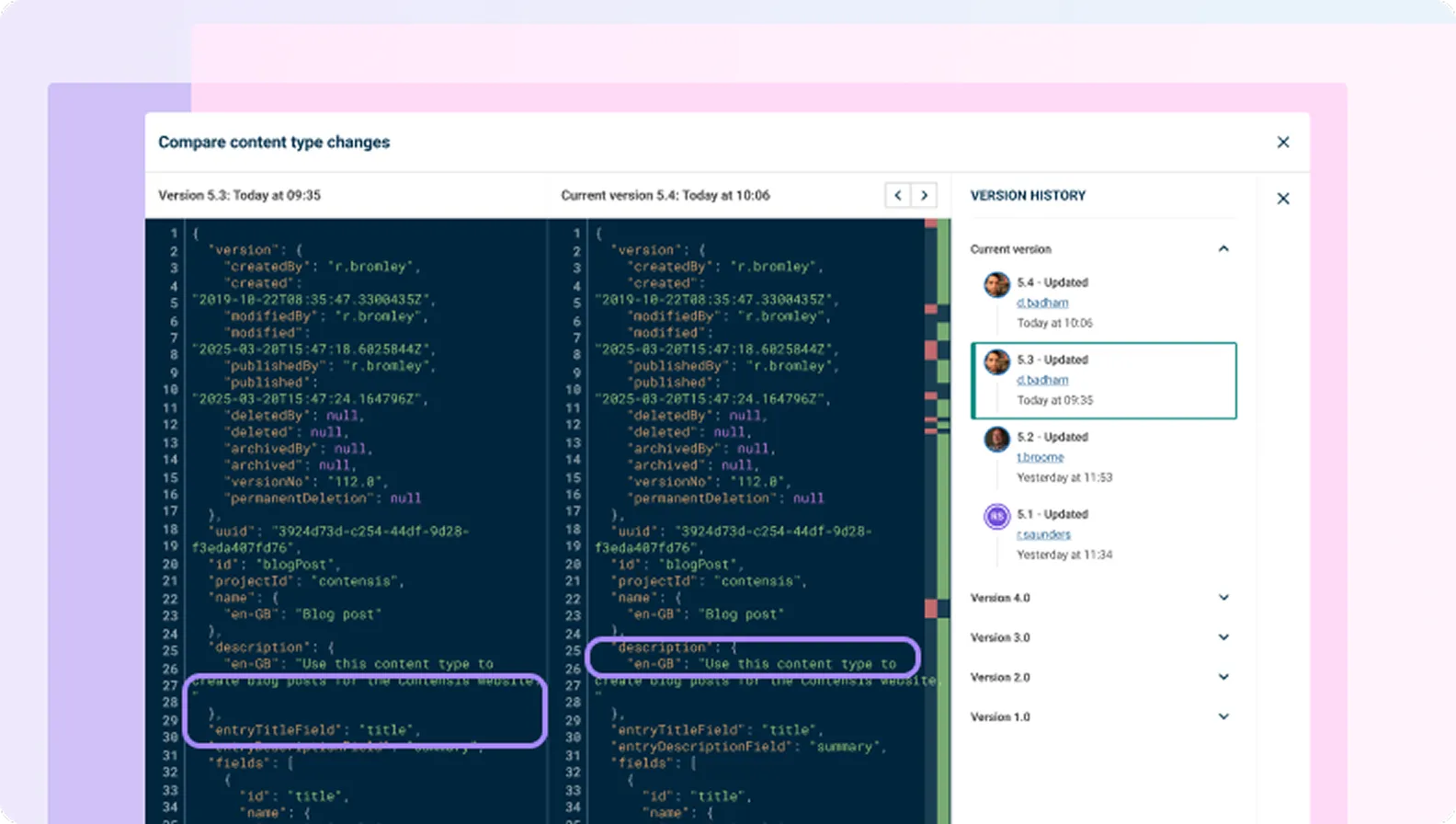
Need to understand the impact of a change? Use the version history panel to compare two versions side by side. A new JSON diff view highlights exactly what’s been added, removed, or modified – perfect for reviews, migrations, or debugging.
Upgrade now
If you are a cloud customer, you can raise a support request today to schedule an upgrade to Contensis 17.1 to take advantage of the new features.
If you are currently using an on-premise version of Contensis, and want to find out more about moving to our cloud platform and how you could benefit from personalisation, forms, and other new features, get in touch to arrange a call from your account manager.






